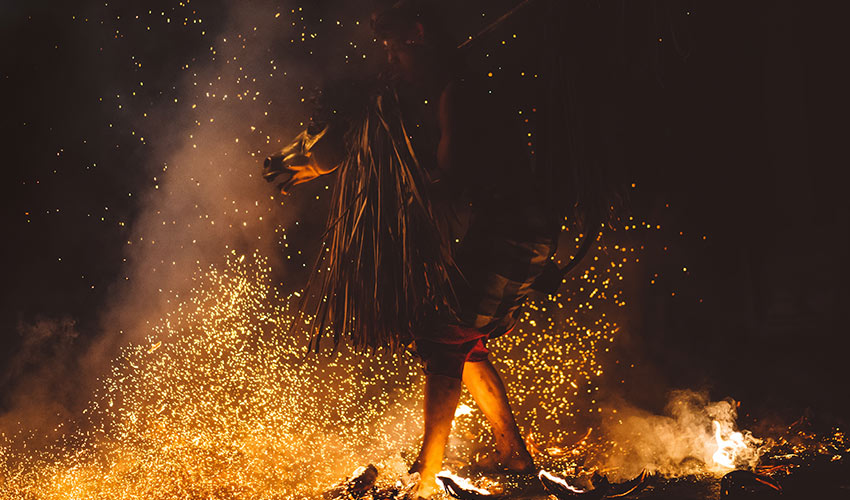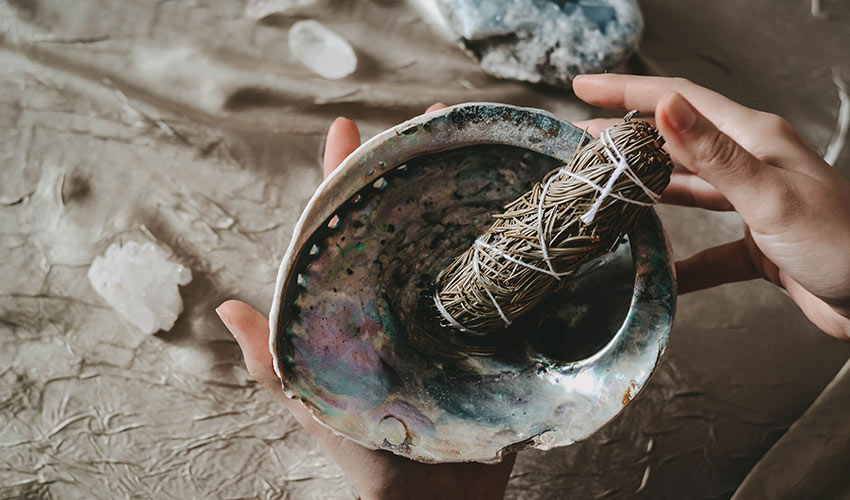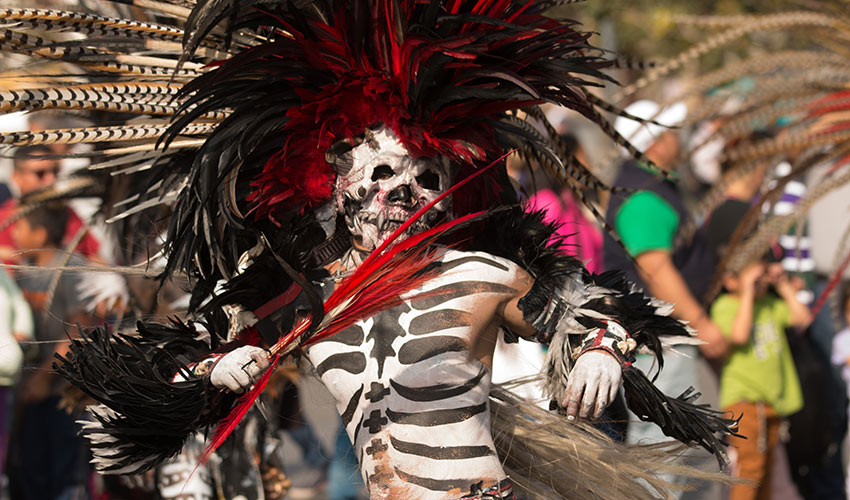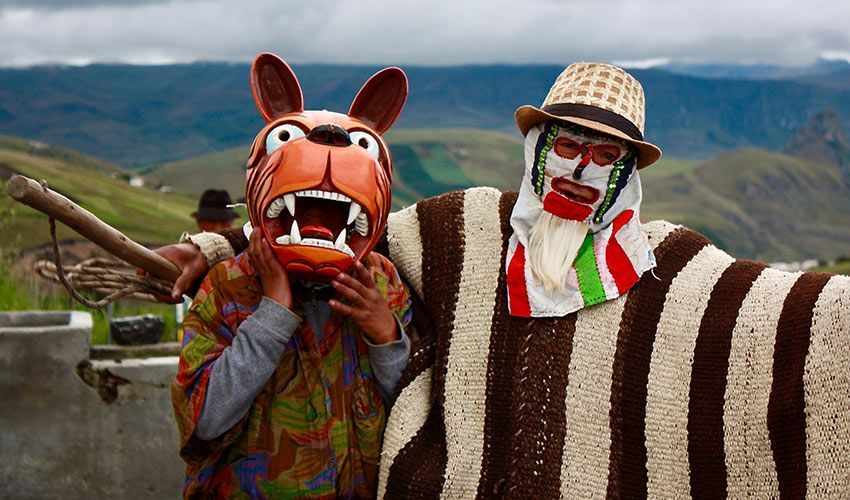An Introduction to Shamanism
“Is everybody in? Is everybody in? Is everybody in? The ceremony is about to begin. The entertainment for this evening is not new, you've seen this entertainment through and through you have seen your birth, your life, your death....you may recall all the rest. Did you have a good world when you died? - Enough to base a movie on??”
These were Jim Morrison’s words. I’ve always been a huge Doors fan and it was Morrison who first introduced me to the mysterious world of Shamanism. Let’s have a closer look at this fascinating ancient practice…
Shamanism is an ancient practice that has been around for thousands of years. It is rooted in the belief that there is a spiritual world that is interconnected with our physical world. Shamans are individuals who use their connection to this spiritual world to heal, communicate with other beings, and gain insight into the natural world. The word shaman comes from Siberia’s Tungus tribe, where the practice originates. However, Shamanism has been a part of many different cultures across the world, from Native American tribes to African cultures, and even in parts of Europe and Asia.
Basics of Shamanism
At its core, Shamanism is about connecting with the spiritual world. This is often done through various rituals and practices, such as meditation, drumming, dancing, or the use of hallucinogenic plants like ayahuasca. Shamans believe that there are multiple layers of reality, and that they can move between these different realities. This allows them to communicate with spirits, ancestors, and other entities that are not visible in our physical world. Another key aspect of Shamanism is the concept of the power animal. Shamans believe that every person has a spirit animal or guide that helps them connect to the spiritual world. This animal might come to them in dreams, visions, or during a Shamanic journey. In Shamanic cultures, healing is also a major focus. Shamans use their connection to the spiritual world to heal individuals who are sick or suffering. This might involve the use of herbal remedies, physical touch, or energy healing.

The Shaman’s Plants
Shamans have used various plants for their healing and spiritual properties for centuries. Some common plants used by shamans include:
- Ayahuasca: This is a vine used in traditional South American shamanic ceremonies, known for inducing intense hallucinations and spiritual experiences. I know has done this and has a pretty amazing story.
- Peyote: This is a cactus found in the Southwestern United States and Mexico, known for its psychoactive properties and use in Native American spiritual practices.
- Salvia Divinorum: This is a plant from the mint family found in the Sierra Mazateca region of Mexico, known for producing intense psychedelic experiences.
- Tobacco: Shamans have used tobacco in various forms for spiritual purification and to communicate with spirits.
- San Pedro cactus: This is a type of cactus found in the Andes Mountains of South America, used in shamanic ceremonies for its psychoactive properties and ability to induce spiritual experiences.
- Cannabis: In some cultures, cannabis has also been used by shamans for its psychoactive properties and for inducing trance-like states.
It's important to note that the use of these plants should always be done under the guidance of a trained Shaman or spiritual practitioner, as they can be dangerous if consumed improperly. Additionally, many of these plants are illegal in certain countries, so it's important to research local laws and regulations before using them. Ayahuasca shaman Don José Campos, commonly known as "Don Jose," is a famous shaman from Peru who gained international recognition for his healing practices with the traditional Amazonian plant medicine, ayahuasca. Another famous Shaman is Alberto Villoldo, who studied under Peruvian Shamans and has written several books on Shamanism and energy healing.

Energy Healing
Energy healing refers to the practice of balancing the energy centers in the body to promote physical, emotional, and spiritual healing. This holistic approach is based on the belief that energy flows through our body, and any blockages can lead to illness or disease. Energy healing techniques aim to remove these blockages and restore the natural flow of energy, allowing the body to heal itself. There are several energy healing modalities, including Reiki, acupuncture, acupressure, pranic healing, and crystal healing, among others. These techniques involve the use of different tools and methods to tap into the body's natural healing abilities and promote overall wellness. Energy healing can be beneficial for a wide range of physical and emotional conditions, including chronic pain, anxiety, depression, stress, and fatigue. It can also help improve sleep quality, boost the immune system, and enhance overall well-being. While energy healing is not a substitute for traditional medical care, it can be used in conjunction with other treatments to help improve outcomes and reduce symptoms. It's an effective way to address the root cause of health issues and promote overall balance and healing in the body, mind, and spirit.
Smudging
Smudging is a traditional Native American ceremony that involves the burning of certain herbs (such as Sage, Sweetgrass, and Chaparral) in order to purify and cleanse an individual or a space. The smoke from the burning herbs is used to clear negative energy, balance the energy of the body and mind, and create a sense of peace and harmony. Smudging is an important part of many Native American spiritual/shamanistic practices and is often used before important ceremonies or events, before entering a sacred space, or anytime one feels the need to clear negative energy and promote positivity. While smudging has been adopted by many people outside of Native American culture, it is important to respect the cultural origins of the practice and to use it appropriately and respectfully. It is also important to note that smudging is not a substitute for professional medical or mental health care, and should be used in conjunction with any necessary medical treatment. Learn more on Smudging here.
The Shamanistic Ceremony
A Shamanistic ceremony is a ritual performed by a Shaman, who acts as a mediator between the physical and spiritual worlds. The ceremony is typically intended to facilitate healing, spiritual communion, and connection to the natural world. The specific practices and rituals involved can vary by culture and tradition, but common elements include the use of music, dance, and prayer or chanting. Participants may also consume plant medicines to induce altered states of consciousness. The Shaman may invoke or communicate with spirit guides or ancestral spirits to help guide the ceremony and bring healing to participants. Overall, Shamanistic ceremonies focus on restoring balance and harmony to individuals and communities.

Siberian Shamanism
Shamanism is a spiritual practice that dates back thousands of years in Siberia. It is a belief system that is based on the belief that everything in the world, both animate and inanimate, has a spirit. The Shaman, or spiritual leader, connects with the spirit world and uses his or her powers to heal, protect, and guide the community. In Siberia, Shamanism has been an important part of the culture since ancient times. The region's harsh climate and difficult living conditions have made it necessary for the people to rely on spiritual practices for survival. Shamanism has been used to protect against disease, find food, and bring luck in hunting and fishing. Shamans in Siberia often use a variety of methods to connect with the spirit world. These can include drumming, chanting, dancing, and sometimes the use of hallucinogenic plants. During a shamanic session, the Shaman may enter a trance and communicate with the spirits to ask for guidance or assistance. In addition to healing and guidance, Shamans in Siberia are also responsible for performing rituals and ceremonies throughout the year. These ceremonies are intended to honor the spirits and maintain harmony in the community. Despite the Russian government's attempts to suppress Shamanism during the Soviet era, it has persisted in Siberia. Today, Shamanism continues to be an important part of the region's culture and is recognised as an official religion in Russia.
Shamanism & Modern Life
While Shamanism might seem like an outdated practice in our modern world, it has actually experienced an increase in popularity in recent years. In part, this is due to the increasing interest in alternative healing practices and spirituality. Many people are turning to Shamanism as a way to find deeper meaning in their lives and connect with something greater than themselves. For some, it might involve attending a ceremony led by a shaman, while others might start learning about shamanic practices on their own. One thing to note is that shamanism is not a religion, but rather a practice that can be incorporated into any belief system. Individuals of any religion or spiritual background can benefit from the shamanic practices of connecting to the spiritual world and seeking guidance from their power animal or guide. At Ancient Purity we daily cleanse our 15th century building with the help of a Hummingbird Sage Smudge Stick. I walk through each room of the building: starting at the entrance, move clockwise through every room, waving the Smudge Stick and spreading the smoke with a feather. Once I have finished with each room, I return to the entrance of the building and sprinkle a few drops of water near the door. This symbolically seals our building with positive energy. Next I take a few deep breaths and feel the positive energy that has been infused into the building. Try it! You as well may feel a sense of calmness and centeredness after the cleansing. If you would like to learn more about shamanism, make sure to read: Shamanism - One of the World’s Oldest Spiritual Practices






















